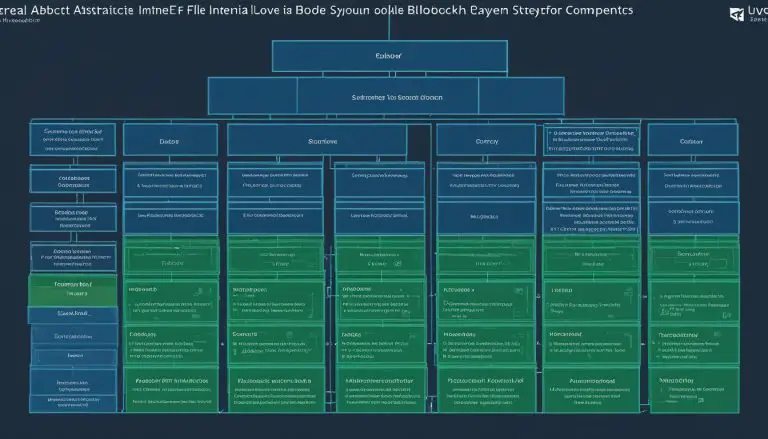Understanding the Basics: What is a Docker Container?
Docker containers have revolutionized the world of software development by providing a lightweight and efficient way to package and run applications across different computing environments. A Docker container is a standardized unit of software that packages up code and all its dependencies, allowing applications to run quickly and reliably.
These containers are portable and can run on both Linux and Windows-based applications. They include everything needed to run an application, such as code, runtime, system tools, system libraries, and settings. Docker containers provide isolation for software, ensuring consistent performance regardless of infrastructure differences.
Unlike traditional virtual machines that abstract physical hardware, containers share the OS system kernel. This results in higher server efficiency and reduced costs. Docker containers are also secure, with strong default isolation capabilities. They can be used in various environments, including Linux, Windows, data centers, cloud, and serverless platforms.
Docker, launched in 2013, created the industry standard for containers and introduced container technology to Windows Server. Today, Docker’s technology is used by major data center vendors, cloud providers, and open-source serverless frameworks. Docker is committed to standardization and has donated its container image specification and runtime code to the Open Container Initiative.
Key Takeaways:
- A Docker container is a standardized unit of software that packages code and its dependencies.
- Containers are portable and can run on Linux and Windows-based applications.
- They provide isolation for software, ensuring consistent performance across different environments.
- Docker containers share the OS system kernel, resulting in higher server efficiency and reduced costs.
- Docker’s technology is widely adopted and used by major data center vendors, cloud providers, and serverless frameworks.
The Definition of a Docker Container
A Docker container is a standardized unit of software that packages up code and all its dependencies, enabling applications to run reliably and efficiently across diverse computing environments. It is a lightweight, standalone, executable package that includes everything needed to run an application, such as code, runtime, system tools, system libraries, and settings.
Docker containers provide isolation for software, ensuring consistent performance regardless of infrastructure differences. They share the OS system kernel, resulting in higher server efficiency and reduced costs. These containers are secure, with strong default isolation capabilities, and can be used in various environments, including Linux, Windows, data centers, cloud, and serverless platforms.
Compared to virtual machines, Docker containers are more portable and efficient. They require less space, handle more applications, and require fewer VMs and operating systems. Docker, launched in 2013, created the industry standard for containers and introduced container technology to Windows Server. Docker’s technology is used by major data center vendors, cloud providers, and open-source serverless frameworks. Docker is committed to standardization and has donated its container image specification and runtime code to the Open Container Initiative. Docker continues to contribute to the industry by developing container runtime technologies like containerd.
| Key Features of Docker Containers: |
|---|
| Portability: Docker containers can run on any machine with Docker installed, regardless of the underlying hardware and operating system. |
| Resource Efficiency: Containers share the OS kernel, reducing the memory and CPU overhead compared to running multiple virtual machines. |
| Isolation: Containers provide application-level isolation, allowing multiple applications to run securely on the same host without interference. |
| Scalability: Docker containers enable easy scaling of applications by deploying additional containers as needed, without impacting the existing ones. |
Networking in Docker involves creating network types like Bridge, Host, and None, and attaching containers to these networks. Docker networking allows for communication between containers using IP addresses or container names.
Understanding How Docker Containers Work
Docker containers work by utilizing containerization technology to encapsulate an application and its dependencies, allowing it to run consistently on any infrastructure that supports Docker. These containers are built using a layered architecture, where each layer represents a specific component of the application stack. The first layer is the base image, which contains the basic operating system and runtime environment required for the application to run. On top of this base image, additional layers are added to include the application code and any necessary libraries or dependencies.
One of the key benefits of Docker containers is their portability. Containers are packaged in a standardized format that can be easily shared and deployed across different computing environments, such as Linux or Windows. This portability eliminates the need for complex configuration and ensures that the application will run consistently regardless of the underlying infrastructure.
Docker containers also provide isolation, allowing applications to run in their own protected environment. Each container shares the same OS system kernel, but is isolated at the application layer. This isolation ensures that applications running in separate containers do not interfere with each other, providing a consistent and secure runtime environment.
Container Networking in Docker
In addition to their portability and isolation, Docker containers can also be networked to enable communication between different containers in an application. Docker provides various network types, such as Bridge, Host, and None, that can be used to create networks for container communication.
By leveraging Docker networking, containers can communicate with each other using IP addresses or container names. This enables the creation of complex applications that are composed of multiple interacting containers, each running in its own isolated environment.
| Container Type | Description |
|---|---|
| Bridge | Creates a private network bridge that allows containers to communicate with each other using IP addresses. |
| Host | Connects the container directly to the host network, allowing it to communicate with other containers and the host machine. |
| None | Disables networking for the container, isolating it completely from other containers and the host machine. |
Overall, Docker containers provide a flexible and efficient way to package and deploy applications. With their portability, isolation, and networking capabilities, Docker containers have revolutionized the software development industry and become the industry standard for containerization.
A Step-by-Step Tutorial on Docker Containers
Whether you are new to Docker or looking to enhance your knowledge, this tutorial will guide you through the process of working with Docker containers and help you get up and running quickly.
Before we dive into the tutorial, let’s start by understanding the basic concepts of Docker containers. A Docker container is a standardized unit of software that packages up code and all its dependencies, allowing applications to run quickly and reliably across different computing environments. They are lightweight, standalone, executable packages that include everything needed to run an application, such as code, runtime, system tools, system libraries, and settings.
To begin, you’ll need to install Docker on your machine. Docker provides installation packages for Linux, Windows, and macOS. Once you have Docker installed, you can open a terminal or command prompt and start running Docker commands.
Creating and Running Your First Docker Container
Now that you have Docker set up, let’s create and run your first Docker container. First, you’ll need to pull a Docker image from the Docker Hub. Docker Hub is a repository of pre-built Docker images that you can use as a base for your containers. You can search for images using the docker search command.
| Command | Description |
|---|---|
| docker pull IMAGE_NAME | Pulls the specified Docker image from the Docker Hub |
| docker run IMAGE_NAME | Runs a new container based on the specified Docker image |
Once you have pulled the desired image, you can run a new container based on that image using the docker run command. You can specify additional options such as port mappings, environment variables, and volume mounts when running the container.
Now that you have successfully created and run your first Docker container, you can explore more advanced features of Docker containers, such as container management, networking, and scaling. Docker provides a comprehensive set of tools and commands that allow you to manage and orchestrate containers effectively.
In conclusion, Docker containers offer a powerful and efficient way to package, deploy, and run applications. Whether you are a developer, system administrator, or IT professional, learning to work with Docker containers can greatly enhance your productivity and simplify the deployment process. So why wait? Start exploring the world of Docker containers today!
A Comprehensive Guide to Docker Containers
With this comprehensive guide, you will gain a deep understanding of Docker containers and learn how to leverage their capabilities to optimize your application deployment process. Docker containers are a standardized unit of software that package up code and all its dependencies, allowing applications to run quickly and reliably across different computing environments. They are lightweight, standalone, executable packages that include everything needed to run an application, such as code, runtime, system tools, system libraries, and settings.
One of the key advantages of Docker containers is their portability. They can run on both Linux and Windows-based applications and provide isolation for software, ensuring consistent performance regardless of infrastructure differences. Unlike virtual machines, which abstract physical hardware, containers share the OS system kernel, resulting in higher server efficiency and reduced costs. Docker containers also offer strong default isolation capabilities, making them secure for use in various environments, including Linux, Windows, data centers, cloud, and serverless platforms.
Compared to virtual machines, Docker containers are more portable and efficient. They require less space, can handle more applications, and need fewer VMs and operating systems. Docker, the company that pioneered containerization in 2013, created the industry standard for containers and introduced container technology to Windows Server. Today, Docker’s technology is widely adopted by major data center vendors, cloud providers, and open-source serverless frameworks. Docker is committed to standardization and has donated its container image specification and runtime code to the Open Container Initiative. They continue to contribute to the industry by developing container runtime technologies like containerd.
Networking is an essential aspect of Docker containers, enabling communication between different containers in an application. Docker networking involves creating network types like Bridge, Host, and None, and attaching containers to these networks. It allows for communication between containers using IP addresses or container names, providing flexibility and scalability for complex applications.
| Key Features of Docker Containers |
|---|
| Standardized unit of software for easy deployment |
| Portable and can run on multiple platforms |
| Isolation for consistent performance across environments |
| Efficient resource utilization and reduced costs |
| Strong default isolation capabilities for security |
| Widely adopted and supported by major vendors |
| Contribution to industry standards and open-source initiatives |
| Flexible networking for inter-container communication |
With this comprehensive guide, you’ll be equipped with the knowledge to harness the power of Docker containers and streamline your application deployment process. Whether you are a developer, IT professional, or business owner, understanding Docker containers is crucial in today’s technology landscape. Embrace the potential of Docker containers and unlock new possibilities for your software development endeavors.
An Introduction to Docker Containers
In this section, we will introduce Docker containers and explore their origins, highlighting the benefits they bring to the world of software development. Docker containers are a standardized unit of software that revolutionize the way applications are developed, deployed, and run. They provide a lightweight and portable environment that enables software to run consistently across different computing environments.
Containers are standalone and executable packages that contain everything needed to run an application, including the code, runtime, system tools, libraries, and settings. Unlike traditional software development methods, Docker containers eliminate the need for manual installation and configuration of dependencies, making the development process faster and more reliable.
One of the key advantages of Docker containers is their portability. They can run on both Linux and Windows-based applications, enabling developers to build applications that can seamlessly transition between different operating systems. This portability also extends to different environments, allowing containers to be deployed in Linux, Windows, data centers, cloud platforms, and even serverless architectures.
The Benefits of Docker Containers
Docker containers offer numerous benefits to the world of software development. By isolating applications at the app layer, containers provide consistent and predictable performance, regardless of the underlying infrastructure. This isolation also improves security, as containers have strong default isolation capabilities, preventing unauthorized access to the underlying host system.
Another benefit of Docker containers is their efficiency. Containers share the host system’s OS kernel, resulting in higher server efficiency and reduced costs. They require less space compared to virtual machines, handle more applications, and need fewer VMs and operating systems to run.
It’s worth noting that Docker, launched in 2013, is the industry standard for containers and has played a pivotal role in popularizing container technology. Major data center vendors, cloud providers, and open-source serverless frameworks rely on Docker’s technology. Docker has also been committed to standardization, contributing its container image specification and runtime code to the Open Container Initiative. This dedication to standardization has ensured interoperability and compatibility across various containerization platforms.
| Benefits of Docker Containers |
|---|
| Consistent performance across different infrastructures |
| Improved security with strong isolation capabilities |
| Higher server efficiency and reduced costs |
| Portability across different operating systems and environments |
| Industry-standard containerization technology |
In conclusion, Docker containers provide a powerful solution for software development, enabling developers to build, package, and deliver applications with ease. Their portability, efficiency, and security features make them an attractive choice for modern development teams. In the next sections, we will delve deeper into Docker containers to provide a comprehensive understanding of their definition, features, and benefits.
An Overview of Docker Containers
This section provides a comprehensive overview of Docker containers, examining their main components and the advantages they bring to the software development process. A Docker container is a standardized unit of software that encapsulates code and all its dependencies, enabling applications to run consistently across different computing environments. These containers are lightweight, standalone packages that include everything needed to execute an application, such as the code, runtime, system tools, libraries, and configurations. They are designed to be portable and can operate on both Linux and Windows-based applications.
Docker containers offer numerous benefits for software development. By sharing the OS system kernel, containers ensure better server efficiency, reduced costs, and improved resource utilization. Unlike virtual machines, which abstract physical hardware, containers isolate applications at the app layer, enabling enhanced portability and efficiency. They require less space, support more applications, and necessitate fewer VMs and operating systems. Docker, a pioneer in containerization, introduced the industry standard for containers in 2013 and extended container technology to Windows Server environments.
Docker’s container technology is widely adopted by major data center vendors, cloud providers, and open-source serverless frameworks. Their commitment to standardization is evident through their contribution of container image specifications and runtime code to the Open Container Initiative. Additionally, Docker continues to advance the industry by developing container runtime technologies like containerd. Networking plays a crucial role in Docker containers, allowing seamless communication between different containers in an application. Docker offers various network types, including Bridge, Host, and None, and provides the ability to attach containers to these networks. With Docker networking, containers can communicate using either IP addresses or container names, providing flexibility and convenience for developers.
| Key Components of Docker Containers |
|---|
| Code: The application’s source code is packaged within the container. |
| Runtime: Docker containers leverage a runtime, such as Docker Engine, to execute the application. |
| System Tools: Containers include the necessary tools and utilities to run the application successfully. |
| System Libraries: The libraries required by the application are bundled within the container. |
| Settings: Docker containers capture the specific configurations needed to run the application. |
Advantages of Docker Containers
- Portability: Docker containers can run consistently across different computing environments, ensuring compatibility without any additional configuration or modification.
- Efficiency: By sharing the OS system kernel, Docker containers achieve better server efficiency and reduce costs by eliminating the need for separate VMs and operating systems.
- Isolation: Containers offer strong isolation capabilities, ensuring that each application runs independently without interfering with other containerized applications.
- Flexibility: Docker containers can be deployed in various environments, including Linux, Windows, data centers, cloud platforms, and serverless frameworks.
- Security: Docker containers provide default isolation and security measures, protecting applications and preventing unauthorized access to resources.
In summary, Docker containers have revolutionized the software development industry by providing a standardized and efficient way to package and distribute applications. With their portable nature, efficient resource utilization, and enhanced security, Docker containers have become the preferred choice for developers and system administrators alike.
Understanding the Basics of Docker Containers
It is essential to grasp the basics of Docker containers, as they form the foundation for effective application deployment and management. A Docker container is a standardized unit of software that encapsulates an application and all its dependencies, providing a consistent and reliable runtime environment. These containers are lightweight, portable, and can be run on different operating systems, making them highly versatile for various deployment scenarios.
One of the key advantages of Docker containers is their ability to package everything needed to run an application, including the code, runtime, system tools, and libraries. By doing so, containers eliminate the “it works on my machine” problem, ensuring that the application runs consistently across different environments. Additionally, containers share the underlying operating system kernel, resulting in improved server efficiency and reduced resource consumption.
Docker containers are highly secure, offering strong default isolation capabilities. They allow applications to be isolated at the app layer, ensuring that they do not interfere with each other, even when running on the same infrastructure. Compared to virtual machines, which require a separate operating system for each instance, containers are more efficient, requiring less space and handling more applications with fewer virtual machines.
| Advantages of Docker Containers |
|---|
| Portability: Docker containers can run on both Linux and Windows-based applications, making them highly portable across different environments. |
| Efficiency: Containers share the OS system kernel, resulting in higher server efficiency and reduced costs. |
| Security: Docker containers provide strong default isolation capabilities, ensuring application security and preventing interference. |
| Versatility: Containers can be used in various environments, including Linux, Windows, data centers, cloud, and serverless platforms. |
Docker, launched in 2013, set the industry standard for containers and introduced container technology to Windows Server. Today, Docker’s technology is widely adopted by major data center vendors, cloud providers, and open-source serverless frameworks. The company is committed to standardization and has donated its container image specification and runtime code to the Open Container Initiative. By developing container runtime technologies like containerd, Docker continues to contribute to the industry, enhancing the capabilities and performance of containers.
In conclusion, understanding the basics of Docker containers is crucial for deploying and managing applications effectively. Containers provide a lightweight, portable, and secure solution for software deployment, offering numerous advantages in terms of efficiency, scalability, and resource utilization. With Docker’s widespread adoption and commitment to standardization, containers have become an essential tool for modern software development.
Exploring the Features of Docker Containers
Docker containers offer numerous powerful features that streamline application deployment, enhance scalability, and simplify maintenance. These features make Docker containers an essential tool for modern software development. Let’s take a closer look at some of the key features that make Docker containers stand out:
- Lightweight and Portable: Docker containers are lightweight, which means they consume fewer resources compared to traditional virtual machines. They are also portable, allowing developers to package and deploy applications across different environments without worrying about compatibility issues.
- Efficient Resource Utilization: Docker containers share the host operating system’s kernel, enabling higher server efficiency and reducing costs. Multiple containers can run on a single host, utilizing resources more effectively and maximizing hardware utilization.
- Isolation and Security: Docker containers provide strong isolation by encapsulating applications and their dependencies. Each container runs in its own isolated environment, ensuring that any changes or issues are contained within the container and do not affect other containers or the host system. This isolation enhances security and prevents conflicts between applications.
- Easy Scalability: Docker containers are designed to scale seamlessly. Developers can easily replicate and distribute containers across multiple hosts or cloud platforms, ensuring that applications can handle increased traffic and demand without any downtime.
- Fast Application Deployment: Docker containers allow for rapid application deployment. With pre-configured container images, developers can quickly spin up new instances of applications, reducing the time and effort required for setting up development, testing, and production environments.
By leveraging these features, developers can streamline their development processes, enhance application performance, and improve overall productivity. Docker containers offer an efficient and flexible solution for building, deploying, and managing applications, revolutionizing the way software is developed.
Networking in Docker Containers
Networking is another critical aspect of Docker containers that enables communication between different containers within an application. Docker provides various network types, including Bridge, Host, and None, to facilitate networking between containers.
With Docker networking, developers can create networks and attach containers to these networks, allowing them to communicate using IP addresses or container names. This networking capability enables seamless integration and collaboration between containerized applications, enabling them to work together as a cohesive system.
In summary, Docker containers offer a wide range of powerful features that simplify application deployment, improve scalability, and enhance maintenance. The lightweight and portable nature of containers, coupled with efficient resource utilization and strong isolation, make Docker containers an ideal choice for modern software development. With easy scalability and fast application deployment, Docker containers provide developers with a streamlined solution for building and managing applications. By leveraging Docker’s networking capabilities, containers can communicate effectively, enabling seamless collaboration between different components of an application. With these features, Docker containers have become the industry standard for containerization, revolutionizing the way software is developed and deployed.
| Feature | Description |
|---|---|
| Lightweight and Portable | Docker containers are lightweight and portable, allowing applications to be deployed across different environments without compatibility issues. |
| Efficient Resource Utilization | Docker containers share the host operating system’s kernel, maximizing hardware utilization and reducing costs. |
| Isolation and Security | Docker containers provide strong isolation, ensuring that changes or issues are contained within each container, enhancing security and preventing conflicts. |
| Easy Scalability | Docker containers can be easily replicated and distributed across multiple hosts or cloud platforms, enabling seamless scalability. |
| Fast Application Deployment | Docker containers allow for rapid deployment, reducing the time and effort required to set up development, testing, and production environments. |
Uncovering the Benefits of Docker Containers
Docker containers provide numerous benefits, enabling organizations to optimize resource utilization, improve scalability, and simplify the deployment of applications. With Docker containers, you can package your application along with its dependencies into a single, lightweight, and portable unit. This eliminates the need for separate installations of libraries and tools on each host, reducing overhead and ensuring consistent environments across different computing environments.
One of the key advantages of Docker containers is their ability to optimize resource utilization. Containers share the underlying operating system (OS) kernel, which allows for more efficient use of system resources compared to traditional virtual machines. By using containers, you can run multiple applications on a single host, reducing hardware costs and improving server efficiency. Additionally, containers start quickly and consume fewer resources, enabling faster scaling and improved performance.
Scalability is another significant benefit of Docker containers. With containers, you can easily replicate and distribute your application across multiple hosts, allowing for seamless scaling to meet changing demands. Containers can be orchestrated using tools like Kubernetes, which automates the management of containerized applications, ensuring high availability and efficient resource allocation. This flexibility and scalability are particularly valuable in cloud and microservices architectures.
Table: Key Benefits of Docker Containers
| Benefit | Description |
|---|---|
| Portability | Docker containers are self-contained units that can run on any environment, providing consistent behavior and reducing deployment issues. |
| Isolation | Containers provide strong isolation between applications, ensuring that changes or issues in one container do not affect others, enhancing security and stability. |
| Efficiency | The lightweight nature of containers enables optimal resource utilization, allowing for higher application density and cost savings. |
| Replicability | Containers can be easily replicated and distributed, providing a scalable and flexible approach to application deployment and management. |
| Standardization | Docker containers adhere to industry standards, ensuring compatibility and interoperability across different platforms and ecosystems. |
In conclusion, Docker containers offer a wide range of benefits that have revolutionized software development. By leveraging containers, organizations can optimize resource usage, achieve greater scalability, and simplify the deployment of applications. With Docker’s commitment to standardization and widespread industry adoption, it’s clear that containers have become an essential tool for modern software development.
Docker Containers: Revolutionizing Software Development
Docker containers have transformed the software development landscape, offering a standardized and efficient approach to application deployment that has become the industry standard. A Docker container is a standardized unit of software that packages up code and all its dependencies, enabling applications to run reliably across different computing environments. It represents a lightweight, standalone, executable package that contains everything necessary to run an application, including code, runtime, system tools, system libraries, and settings.
One of the key advantages of Docker containers is their portability. They can run on both Linux and Windows-based applications, making them suitable for various environments such as data centers, cloud platforms, and serverless frameworks. By isolating applications at the app layer, containers ensure consistent performance regardless of infrastructure differences. This shared OS system kernel approach results in higher server efficiency and reduced costs. Docker containers also offer strong default isolation capabilities, making them secure for deployment.
Compared to virtual machines, Docker containers are more portable and efficient. They require less space, can handle more applications, and need fewer VMs and operating systems. Docker, which was launched in 2013, created the industry standard for containers and extended container technology to Windows Server. Today, Docker’s technology is widely used by major data center vendors, cloud providers, and open-source serverless frameworks. Docker has shown its commitment to standardization by donating its container image specification and runtime code to the Open Container Initiative. Additionally, Docker continues to contribute to the industry by developing container runtime technologies like containerd.
Networking in Docker plays a vital role in enabling communication between different containers within an application. Docker provides various network types, such as Bridge, Host, and None, which can be used to create and attach containers to networks. This allows for communication between containers using IP addresses or container names, facilitating efficient collaboration and interaction.
| Key Features of Docker Containers |
|---|
| Portability |
| Efficiency |
| Isolation |
| Security |
| Standardization |
In summary, Docker containers offer a game-changing solution for developers, allowing them to easily package and deploy applications across different environments. With their portability, efficiency, and strong isolation capabilities, Docker containers have revolutionized software development by providing a standardized and efficient approach to application deployment.
Docker Containers: Industry Adoption and Standardization
Docker containers have gained significant traction in the industry, with major players embracing this technology and Docker leading the way in promoting standardization. As a revolutionary approach to software development, Docker containers have redefined how applications are built, deployed, and managed across diverse computing environments.
With Docker containers, developers can package their code and dependencies into a portable and self-contained unit, eliminating compatibility issues and ensuring consistent performance. This enables applications to run seamlessly on various platforms, including Linux, Windows, data centers, and cloud environments. By sharing the operating system kernel, Docker containers provide higher server efficiency and reduce costs by requiring fewer virtual machines and operating systems.
Docker, founded in 2013, has become the industry standard for containerization. Their technology has been widely adopted by major data center vendors, cloud providers, and open-source serverless frameworks. Recognizing the need for standardization, Docker has played a pivotal role in establishing the container image specification and runtime code, which have been contributed to the Open Container Initiative. Docker continues to drive innovation in container runtime technologies, including the development of containerd, a powerful container runtime solution.
| Key Points | Benefits |
|---|---|
|
|
Networking in Docker is another essential aspect, enabling communication between different containers in an application. By creating network types such as Bridge, Host, and None, and attaching containers to these networks, developers can establish seamless communication channels. Docker networking allows for easy connectivity using IP addresses or container names, enhancing the overall functionality of containerized applications.
In conclusion, Docker containers have revolutionized the software development industry by providing a lightweight, portable, and efficient solution for application deployment. With widespread adoption by industry leaders, Docker has driven the standardization of containers, ensuring compatibility and interoperability across platforms. As the industry continues to embrace this technology, Docker’s commitment to advancing container runtime technologies and promoting collaboration through standardization remains at the forefront of industry progress.
Conclusion
In conclusion, Docker containers have revolutionized the way applications are developed, deployed, and managed, offering unparalleled flexibility, scalability, and efficiency.
A Docker container is a standardized unit of software that packages up code and all its dependencies, allowing applications to run quickly and reliably across different computing environments. It provides a lightweight, standalone, executable package that includes everything needed to run an application, such as code, runtime, system tools, system libraries, and settings.
Docker containers are portable and can run on both Linux and Windows-based applications. They provide isolation for software, ensuring consistent performance regardless of infrastructure differences. Containers share the OS system kernel, resulting in higher server efficiency and reduced costs.
Furthermore, Docker containers are secure, with strong default isolation capabilities. They can be used in various environments, including Linux, Windows, data centers, cloud, and serverless platforms. Compared to virtual machines, containers are more portable and efficient, requiring less space, handling more applications, and needing fewer VMs and operating systems.
Docker, launched in 2013, created the industry standard for containers and introduced container technology to Windows Server. Its technology is used by major data center vendors, cloud providers, and open-source serverless frameworks. Docker is committed to standardization and has donated its container image specification and runtime code to the Open Container Initiative. Docker continues to contribute to the industry by developing container runtime technologies like containerd.
In summary, Docker containers have transformed software development practices, enabling developers to build and deploy applications with ease. Their flexibility, scalability, and efficiency make them an essential tool in modern software development and deployment processes.
FAQ
What is a Docker container?
A Docker container is a standardized unit of software that packages up code and all its dependencies, allowing applications to run quickly and reliably across different computing environments.
What does a Docker container include?
A Docker container includes everything needed to run an application, such as code, runtime, system tools, system libraries, and settings.
Can Docker containers run on both Linux and Windows-based applications?
Yes, Docker containers are portable and can run on both Linux and Windows-based applications.
What benefits do Docker containers provide?
Docker containers provide isolation for software, ensuring consistent performance regardless of infrastructure differences. They also result in higher server efficiency, reduced costs, and strong default isolation capabilities for increased security.
Where can Docker containers be used?
Docker containers can be used in various environments, including Linux, Windows, data centers, cloud, and serverless platforms.
How are Docker containers different from virtual machines?
Containers isolate applications at the app layer, while virtual machines abstract physical hardware. Containers are more portable, efficient, and require less space, handling more applications and needing fewer VMs and operating systems.
When was Docker launched?
Docker was launched in 2013.
Who uses Docker’s technology?
Docker’s technology is used by major data center vendors, cloud providers, and open-source serverless frameworks.
What has Docker contributed to the industry?
Docker has donated its container image specification and runtime code to the Open Container Initiative and continues to contribute to the industry by developing container runtime technologies like containerd.
How can Docker containers be networked?
Docker containers can be networked by creating network types like Bridge, Host, and None, and attaching containers to these networks. Communication between containers can be done using IP addresses or container names.
- About the Author
- Latest Posts
Mark is a senior content editor at Text-Center.com and has more than 20 years of experience with linux and windows operating systems. He also writes for Biteno.com





